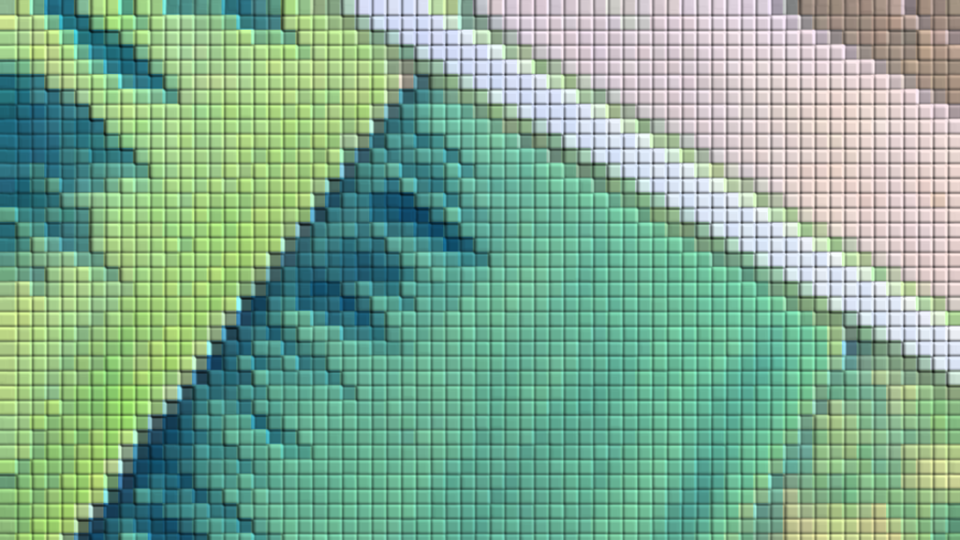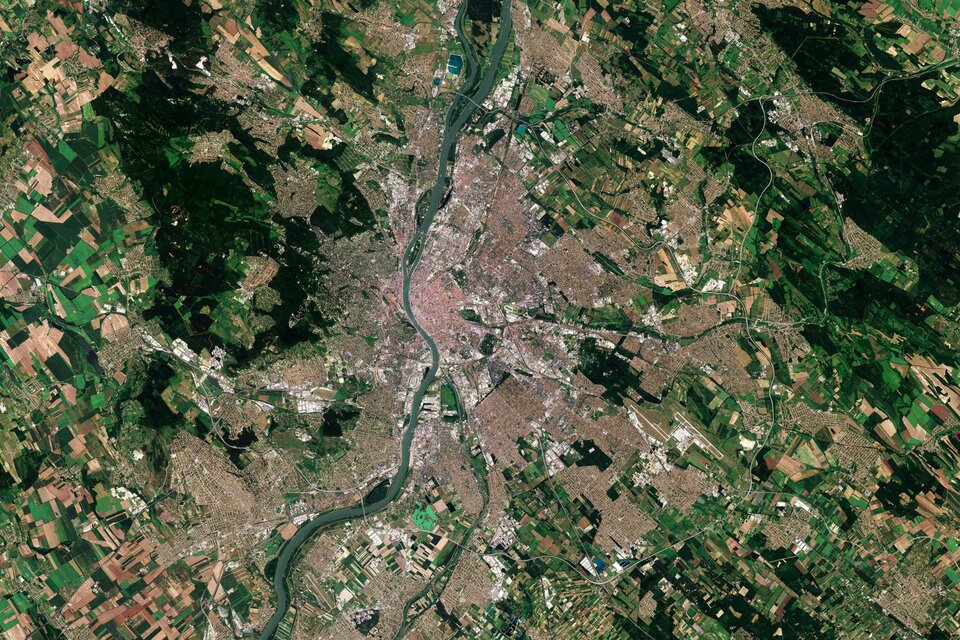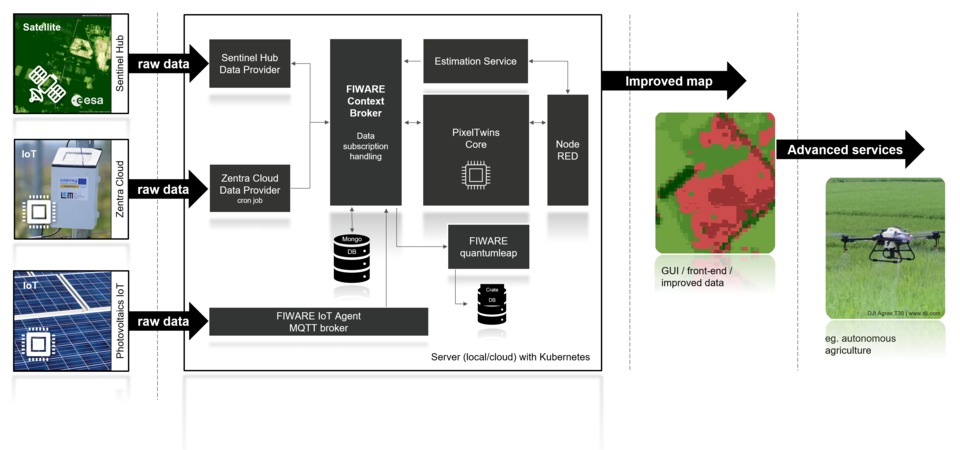Creating Earth’s pixel twins for smart farming
Can you imagine having a tool that monitors Earth’s surface and, if an area is significantly warmer than the surrounding ones, asks the landlord to plant a tree? An innovative project funded by ESA through the Discovery element of its Basic Activities seeks to integrate satellite data about Earth’s surface with the Internet of Things and make this possible.
Observing Earth from space provides essential information for monitoring climate change and improving agricultural practices. While satellite data are available for every square meter of our planet’s surface, they are not always easy to use for new services and business ideas. Researchers from the Linz Center of Mechatronics GmbH, Austria combined Earth observation and the Internet of Things (IoT) by dividing the surface of our planet into equally sized pixels.
Each Pixel Twin is a treasure case containing data from Earth observation portals associated with a particular area and is identifiable and addressable with an IoT object. The grid of pixels, covering Earth’s full surface, will live within EU's FIWARE IoT framework, which brings together data sources with the services built on top of them.
The “Pixel Twins – integrating Earth’s surface into the internet of things” project was initially submitted through ESA’s Open Discovery Ideas Channel (OSIP).
“We thought that ESA’s OSIP was the perfect opportunity to propose our idea”, says Leander Hörmann, Team Lead Industrial IoT at Linz Center of Mechatronics GmbH. “It led to an exceptionally good cooperation, and we received valuable feedback from the ESA team at all stages of the project. The constant exchange of project status and ideas for further development led to a meaningful project outcome.”
"With the Discovery element of ESA's Basic Activities we are focussing on identifying the most novel, potentially game changing ideas and funding the first steps to realise them, nurturing innovation in the European space sector," says Leopold Summerer, Head of the Advanced Concepts and Studies Office at ESA. "The Pixel Twins project is a prime example of how we can foster ground breaking ideas that have the potential to create new business opportunities."
Why combine Earth observation with IoT?
Combining ground-based and satellite information provides a more complex picture and overcomes the limitations of each data set. While satellites can easily collect data for large areas of the Earth, sometimes the surface is obstructed by clouds. Ground-based sensors are not affected by this aspect, but are able to monitor only small areas.

“Remote sensing devices are very far from the object of the observation, and sometimes it is particularly useful to complement that with in situ sensors,” explains Bertrand Le Saux from ESA’s Phi-Lab, senior scientist and lead on this project. “What is very innovative is that Earth observation data have been put in the IoT framework, using all the capacity that are usually used in processing IoT data.”
“Very precise but scattered data from the IoT side can enrich coarse data from the earth observation part, and it turns out a win-win situation. The overall result is a significantly increased data quality which enables new fields of applications”, he adds.
From idea to smart farming
The approach developed by the team has been applied to two use cases: smart faming and photovoltaics. “During the first phase of the project, we conducted a stakeholder workshop to identify the most interesting and promising use cases”, tells Leander.
From the proposed ideas, the team selected the use cases with the best applicability. “The use cases should have a good possibility to combine Earth observation data with IoT data, and the selected application within the use-case should benefit significantly from the approach”, he adds.

In both cases, the researchers evaluated the approach on small test areas. “In the smart farming use case, we applied it to a vineyard in Hungary, where our IoT devices were installed during a European project,” explains Leander, “while in the photovoltaic use case, we applied it in the vicinity of local photovoltaic installations.”
For smart farming applications, data about the greenness of the vegetation from Sentinel-2 satellite and IoT based have been combined together. As a result, these data sets are improved and continuously available. For the photovoltaics, potential improvements in the estimation of the energy potential at different geographical locations are possible.
“We successfully demonstrated our approach in both cases,” says Leander, “and we demonstrated how satellite Earth observation data could be enhanced through the integration of IOT-based in-situ data. The Pixel Twins project is a good example of how combining different data sources enhances the possibilities across different application domains”.
The new approach of Pixel Twins can support many new services and business in the future. “When scaled up, this project will be very impactful”, says Bertrand.
“Results from the project have already been incorporated into thematically linked research project proposals, one of which has already been granted,” continues Leander. “We will use the Pixel Twins approach as one aspect of building digital skills for smart farming in Central Europe”.





